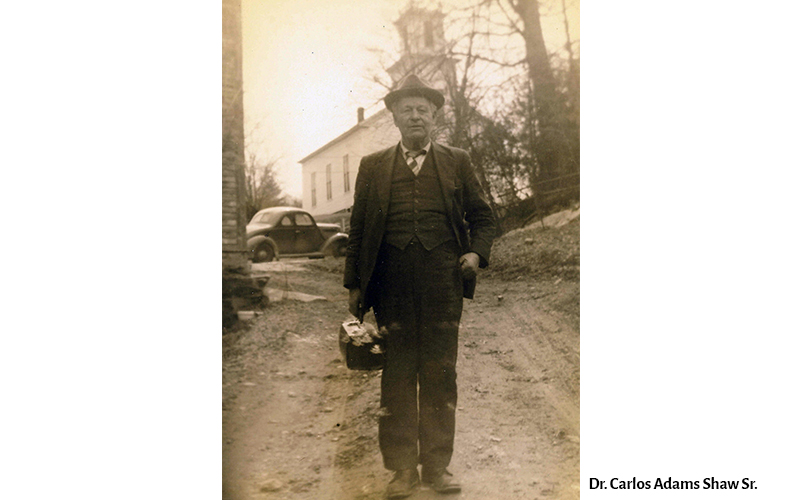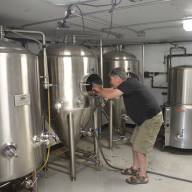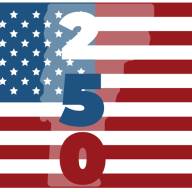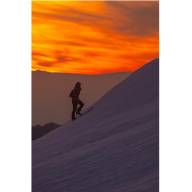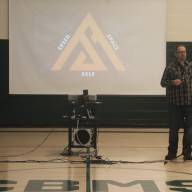“Cradle to grave doctor from the Valley’s past.”
The following is the original obituary for Dr. Carlos Adams Shaw Sr. dated February 17, 1950:
“Dr. Carlos Adams Shaw, 79, prominent and respected physician of Waitsfield, died at his home last night at about 10:00 o’clock after a brief illness. He was the only physician serving the communities of Warren, Waitsfield, Fayston and Moretown, with a few exceptions when a doctor may have been summoned from Waterbury or Montpelier.
Prior to coming to Waitsfield, in 1924, Dr. Shaw practiced at West Windsor, Sharon, Northfield and Roxbury. Last August a reception was given by townspeople celebrating 50 years of practice of medicine and of 25 years of resident practice here. Only last Tuesday he got up from his sickbed to help another family.
Dr. Shaw was born in Northfield on July 22, 1870, son of William and Elizabeth Kingsley Shaw. He attended Northfield schools, Randolph Normal School and the University of Vermont from which he graduated in the class of 1899. He served his medical residency at Massachusetts General Hospital in Boston.
Dr. Shaw was married three times. His first wife, Aurelia Mary Peck, of Brookfield, died only three years after their marriage, although they had two children, one of which survived. The marriage was in 1899. In 1907 he married Edith Henderson of Northfield who is also deceased. The third marriage took place in 1944, the bride being Martha Miles of Waitsfield who survives.
Besides his widow, he is survived by six sons, Carlos Jr., Max and Donald of Waitsfield, Benjamin and Phillip of Monte Carlo, Cal., and Alden of Swanton; and by one daughter, Mrs. (Aurelia) Elmer Mehuron of Waitsfield. Dr. Shaw was a member of Masonic Lodge #77 and the I.O.O.F, both of Waitsfield. He has served Waitsfield and outlying districts faithfully for over 25 years and his death is an incalculable loss to the entire community.
He gave unstintingly of his time and ability and there is scarcely a family of the Mad River Valley which he has not visited in time of trouble.”
HANDED-DOWN STORIES
I was only 3 years old when Dr. Shaw passed so I have no memory of him, but stories have been handed down that add to the lore of an important character from the Mad River Valley’s past.
Some years back I discovered that the Shaw family had a home in Roxbury. Supposedly, there was a road by the Shaw name directly off the Warren/Roxbury Mountain Road. I investigated and was excited to discover that there was, in fact, a road with that name. The sign at the beginning clearly stated, Shaw Road! I traversed the old lane which was really more like two tracks with grass in between than an upgraded roadway. The area was so grown over with new trees and other vegetation that I never did find the original foundation, although I did view stonewalls. However, I was satisfied that I had confirmed some of the Shaw’s history in Roxbury.
Doctor Shaw’s home in Waitsfield was on the east side of the covered bridge on Bridge Street. It is the house just prior to the brick building across from the Miramar Ski Club. Sometime prior to Dr. Shaw occupying this building it served as the Congregational Parsonage. Later, his son, Max Shaw, owned the home. Max was a longtime butcher at Mehuron’s and also delivered groceries throughout The Valley.
I have often heard my elders, sadly not with us to continue sharing The Valley’s personal history, speak of the good doctor’s ability to create his own medicines that fit particular needs, most often testing done on himself before administering it to his patients. He created some type of salve for healing and pain relief, most likely for the hard-working farmers who were, then, The Valley’s character.
GRAMPA
But my personal story comes directly from my grandfather, Earl Baird, when he owned and operated his family farm on Common Road in Waitsfield. This land had been in two sides of my ancestry. My great-great-great-grandfather, Patrick Moriarty, sold this lot to my great-great-grandfather, James Baird. Three generations later this farm was still in the Baird family, Earl being the last before he sold to developers in 1964. This site is now known as Ski Valley Acres with its gorgeous views to the west. I will refer to Earl as Grampa for the remainder of this article.
Grampa, as a farmer, had to maintain and repair all things related to the farm, the same as others did during that era. It was the mid-1930s. The barn running parallel to Common Road needed roof repair. The attached barn perpendicular to the main road had traditional shingles, but this one was covered with metal. At some point during the repair, he slipped and fell about 25 to 30 feet to the ground, breaking both legs in the ankle area.
He couldn’t get up so began yelling for help hoping my grandmother, Marietta “Etta” Bowen Baird, or Maggie Robinson, the Irish housekeeper, would hear his pleas. At last, Maggie heard his cries and the rescue began and Grampa was moved to the farm house. Dr. Shaw was summoned using the old magneto crank telephone system. He arrived some time later and set the broken bones and did whatever else he could to ease the pain.
NEIGHBORS PITCHED IN
Farming neighbors pitched in immediately and for some time after the event to take care of the endless chores. Grampa was totally unable to rise and do anything. His frustration and depression grew with the isolation he’d been relegated to. My grandmother came up with an idea and moved a bed out into the front yard and pitched a tent-like enclosure over it so he could view the goings on even during inclement weather. This was a great stress reliever for him.
Frustratingly, my grandparents would observe Dr. Shaw going by often conducting his patient rounds, but he wouldn’t stop. They actually began to be angry with him as if he was totally ignoring Grampa’s needs. Finally, a call was placed and his presence was required at the Baird farm. He came immediately and began looking closely at the healing process of Grampa’s damaged legs. With a great sigh of relief and an apology for his failure to stop by he said, “I was so worried we’d have to remove one of your legs, I was having great anxiety about stopping, but it’s all looking very good now. I am so relieved!”
Grampa finally healed to the point he could return to his work, but the neighbors continued to assist when they could. They all had their own farms, businesses and families and it made their caring ways that much more endearing to my grandparents. It has to be said that helping your neighbors was the rule then and not the exception.
TIME OF NEED
Steve Joslin shared the following story of his father, Riford Joslin’s, time of need for Dr. Shaw. As a quick history, Riford at one point owned a grist mill on Bridge Street in Waitsfield. This site is now the location of the Miramar Ski Club. Power to run this mill was originally hydro. A canal was dug from the Mad River, under Bridge Street and then under the mill turning the cogs of the machinery and returned to the river. Later the hydro power was replaced by electricity.
Riford had a dual-wheel truck for his deliveries of grain and this one day he was attempting to repair one of those tires. In those times, split-rims were used on larger tires for trucks. Dismounting and mounting tires was an adventure in peril because the split rim had the potential to blow away from the rest of the assembly and could cause severe injury and even death. Today, these types of rims are placed and chained inside a metal cage to facilitate safety. Thus was the situation as Riford and Mervin “Mert” Kingsbury were in the middle of the procedure when the rim blew off and struck Riford on the bridge of his nose. The force of the explosion catapulted Riford off the deck of the porch, but thankfully the truck was backed up tight and he ended up in the body of the truck. Mert loaded him into a car and took off for Dr. Shaw’s office. As they were entering the covered bridge, Betty Joslin (a teacher at Waitsfield High School) exited the walk bridge and viewed her husband hanging out of the car bleeding profusely down the side of the door. All Riford managed was to yell, “Going to the doctors!” She had to wait until returning to the mill to discover what had happened.
Dr. Shaw sewed Riford up and sent him on his way. He fully recovered after days of closed eyes and a black and blue face. To Riford’s delight the severe sinus problems he’d had up to that point in his life never returned. As a point of historical reference, Riford was brother to Fletcher Joslin, also a longtime Valleyite and a lawyer. Riford started a woodworking business creating furniture and knick-knacks and many other variations. His first shop was in the garage across from his home on Mill Hill off Bridge Street. He moved to Irasville later and had his shop and home next door to the present day, Addison West (formerly The Store).
RETURN TO FARMING
At one point in Dr. Shaw’s career, he wanted to give up medicine and return to farming. However, it soon became definitively apparent that his medical expertise being sought after was a constant interruption. Alas, and thankfully for his patients, he returned to his medical practice. This was prior to moving to Waitsfield. There was some irony in that he was often paid with chickens and farm produce for his medical services.
Attending to the sick was not the doctor’s only responsibility. During WWII Western Union’s devastating telegrams regarding MIA or KIA information were left with the local telephone companies for final delivery. Unlike our national address system of today, the rural character of Vermont left finding the intended addressee difficult. Eunice Farr was the current owner of Waitsfield-Fayston Telco. She had been running the company since the early death of her husband, Alton Farr, in 1940. Alton purchased the telco in 1904. Waitsfield Telecom remains in the family still.
DREADED RESPONSIBILITY
So, Eunice had the thankless and dreaded responsibility of delivering the Western Union messages and often she asked Dr. Shaw to accompany her in case of a medical need arising. I’m sure his presence also made her feel a little more confident and eased her own anxiety.
Dr. Shaw was all of what one would envision in a country doctor. Times have changed immensely since the cradle to grave care given by these dedicated physicians. It is not to say that today’s medical world is uncaring. It was simply another time, another era when one person could singularly eliminate a family’s fear and angst, just by showing up with a black bag full of miracles.
This brief bio is a shortened version of Dr. Shaw’s time and in no way does it cover the man’s immense history. It important to me to acknowledge this humble man who touched so many lives.


